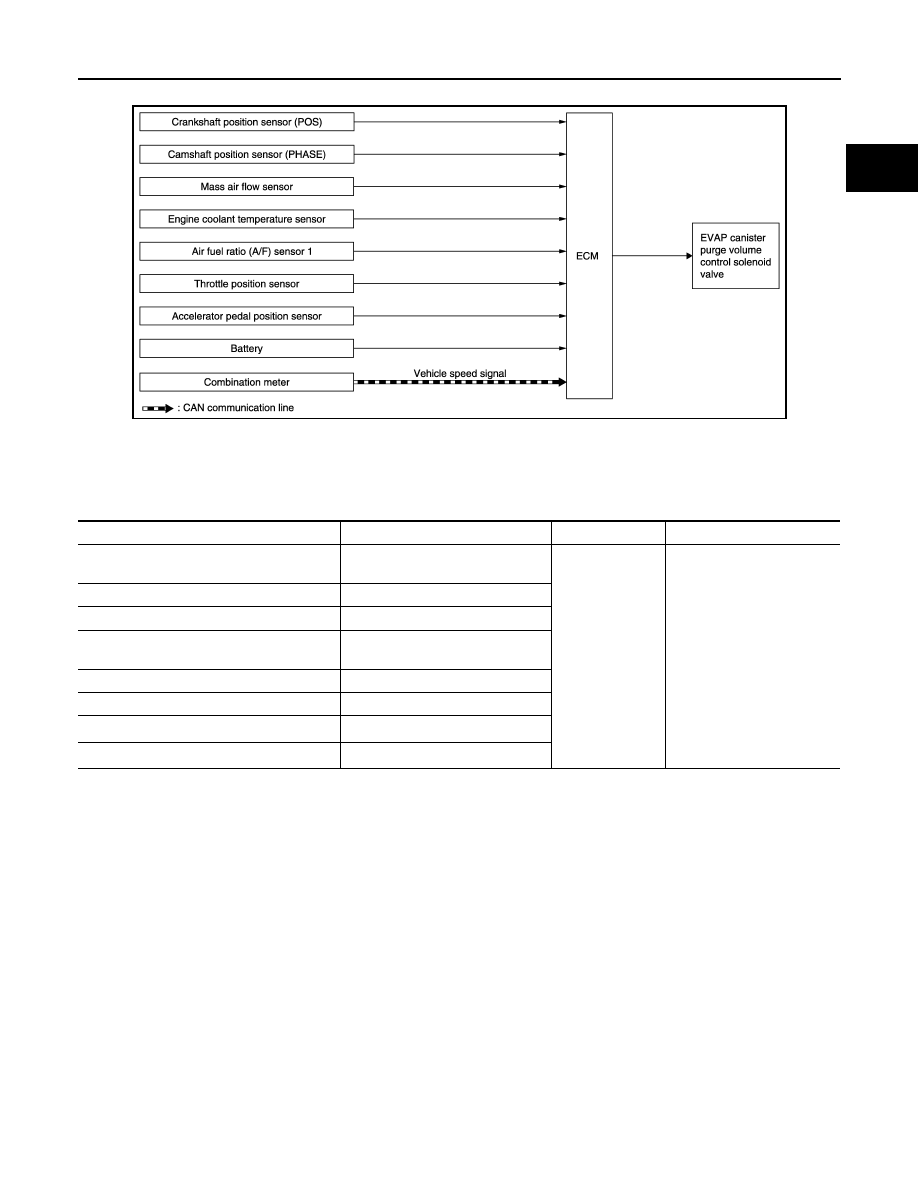Nissan March K13. Manual - part 145

SYSTEM
EC-41
< SYSTEM DESCRIPTION >
[HR12DE (TYPE 1)]
C
D
E
F
G
H
I
J
K
L
M
A
EC
N
P
O
EVAPORATIVE EMISSION SYSTEM : System Diagram
INFOID:0000000005995411
EVAPORATIVE EMISSION SYSTEM : System Description
INFOID:0000000005995412
INPUT/OUTPUT SIGNAL CHART
*1: ECM determines the start signal status by the signals of engine speed and battery voltage.
*2: This signal is sent to the ECM through CAN communication line.
JSBIA0322GB
Sensor
Input signal to ECM
ECM function
Actuator
Crankshaft position sensor (POS)
Camshaft position sensor (PHASE)
Engine speed
*1
EVAP canister
purge flow control
EVAP canister purge volume
control solenoid valve
Mass air flow sensor
Amount of intake air
Engine coolant temperature sensor
Engine coolant temperature
Air fuel ratio (A/F) sensor 1
Density of oxygen in exhaust gas
(Mixture ratio feedback signal)
Throttle position sensor
Throttle position
Accelerator pedal position sensor
Accelerator pedal position
Battery
Battery voltage
*1
Combination meter
Vehicle speed signal
*2